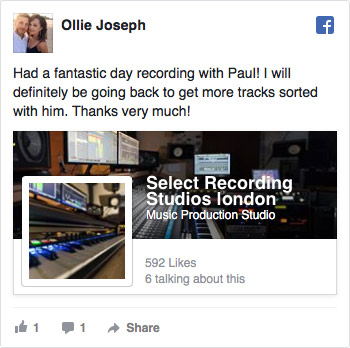FAQs: Mixing and Mastering
Although it's possible to mix and master in your home studio or at the same studio you record in, the mixing and mastering process does require specific equipment and skills to polish your sound and to provide you with the best possible result. Most importantly, our studio is fully equipped with the latest and best quality plugins for mixing and mastering and excellent monitoring facilities so that your final master has maximum clarity and dynamics.
A basic mixing session involves importing your individual stem tracks and then analyzing them to determine the best possible mix. In addition to setting levels for each track, particular attention will be given to the following. We will ensure that there is no volume clipping, and that vocals or instruments are doubled or layered to achieve a punchier sound. We will also add any required stereo widening, and ensure that appropriate EQs are added to filter or emphasise particular frequencies and to deal with unwanted audible artefacts such as sibilance (excessive "s" and "t" sounds in vocals). We will also add reverb and delay effects where suitable to individual tracks. Finally, compression of the tracks will performed and the mix outputted with enough headroom for mastering to proceed.
Once there is a finished and mixed track in hand then final mastering processing can begin. Whilst every mix requires a different approach, broadly speaking the final master will commonly involve applying a master EQ effect, a master reverb, compression, an exciter or widening effect and a maximizer. Once these have been applied then the mastered track will be listened to and checked to ensure the best final output quality on a variety of sources, including our own high quality monitors..
Yes, please do, as there may be features or parts you wish to enhance or modify within your compositions. Send an Email or telephone 0203 1468 768 | 07980 000345
A stem is a complete track from start to finish. Please bounce all tracks in their entirety from the start to finish of the song, including silence where parts are not playing This is so the complete song will lay out in the correct positions for the mix when imported into our system. also please remove all processing Ie Eq Fx Compression as we will add all processing and fx at our studio.
- Logic Pro X – https://www.youtube.com/watch?v=frKZ1YQ-No0&t=9s
- Pro Tools – https://www.youtube.com/watch?v=iFC-_U_Qp7U&t=23s
- Garageband – https://www.youtube.com/watch?v=M0vCDyqqM6g&t=1s
- Ableton Live – https://www.youtube.com/watch?v=OiN_ovVsp40&t=22s
- FL Studio – https://www.youtube.com/watch?v=Y_YB2RVcusc&t=5s
- Cubase – https://www.youtube.com/watch?v=OSwd1f81ZD0&t=31s
- Reaper – https://www.youtube.com/watch?v=KLltl2nvsR8&t=1s
We have a great selection of analogue equipment in addition to our vast collection of professional software based plugins. Different songs may well require different 'flavours' and we will employ the use of analogue equipment in such cases as needed. We use the best combination to achieve the best, professional results for your compositions.
You may instruct us to make up to 2 revisions of your online mix or master.
We have over 20 years experience in mixing and mastering most genres.
We employ mastering techniques according to the industry requirements of Spotify and Apple to ensure your tracks are competitive in volume and audio clarity.
We are based in Wood Green, North London.






















